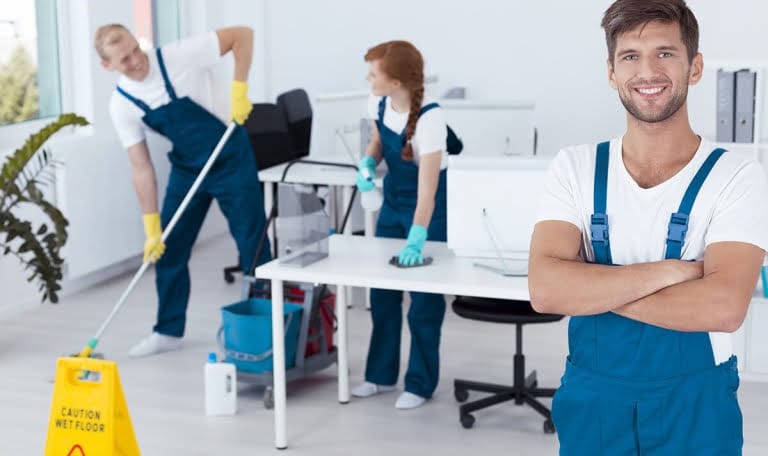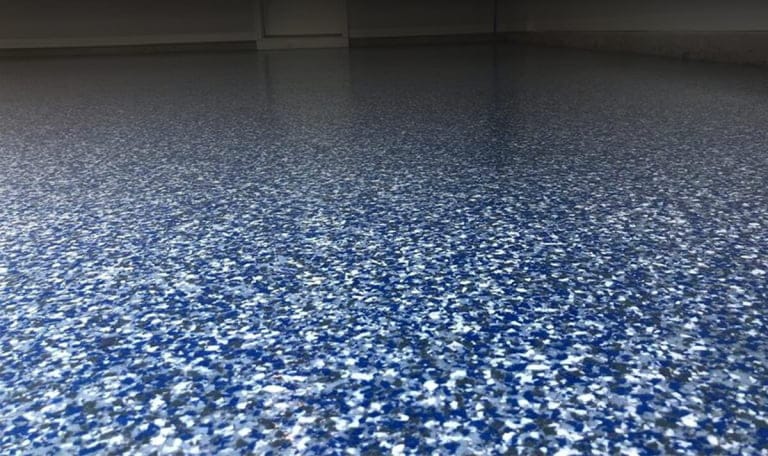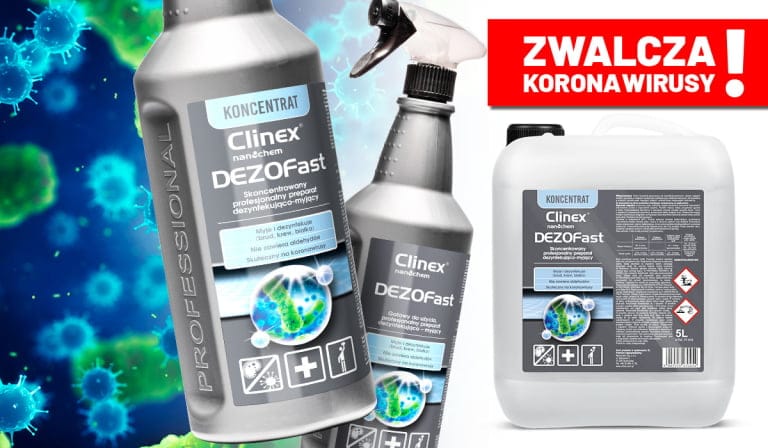ClinexEDU presents a compendium of knowledge about cleaning and caring for floors. We managed to gather a decent amount of knowledge in the Clinex Knowledge Base. We are starting a series of ClinexEDU entries, where compendiums of knowledge divided into selected areas will be posted.In this article, we will try to introduce you to the most important aspects of this process and suggest what measures and methods are best for keeping various types of floor surfaces clean.
PH – pH of cleaning products
Floor cleaning products can be divided into three types depending on their pH: acidic, neutral and alkaline. Agents with an acidic pH are effective in removing inorganic dirt, such as hard water deposits or rust. However, agents with a neutral reaction are safe for sensitive surfaces, such as stainless steel or floors protected with polymers or waxes. However, products with an alkaline reaction are effective in removing dirt of organic origin, such as fats or proteins. It is recommended to use agents with an acidic pH in sanitary rooms because they are safe for health and the environment.
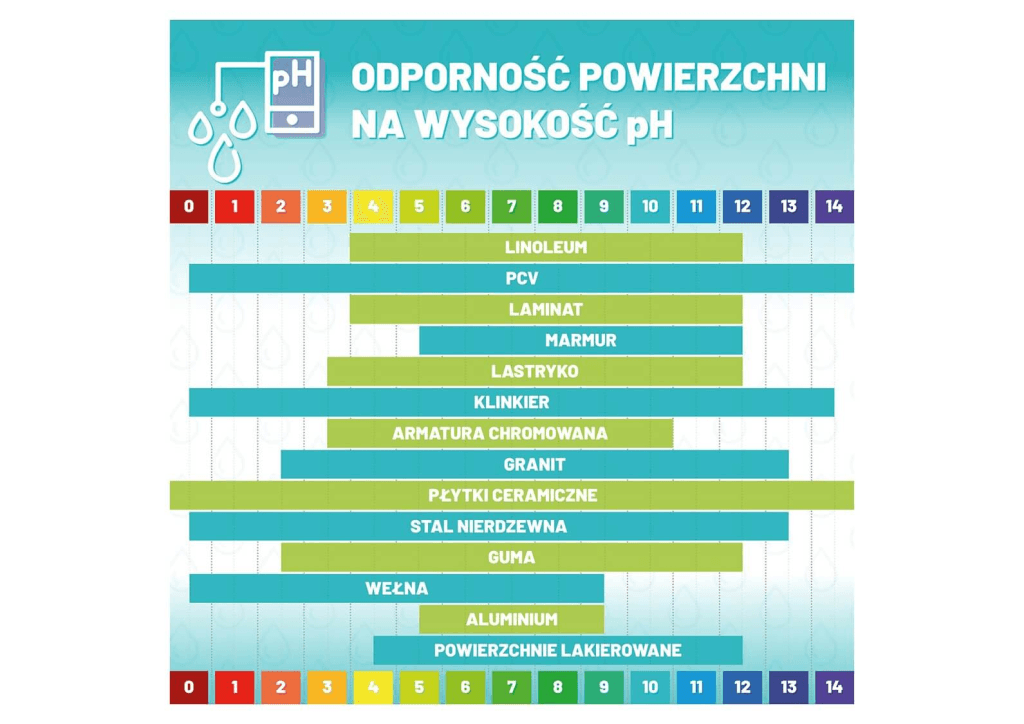
Article https://www.clinex.com.pl/blog/porady/kwasne-ph-srodki-do-mycia-pomieszczen-sanitarnych/
From the article you will learn:
- What is the pH factor and what reactions can we distinguish?
- What are the characteristics of cleaning products with acidic, neutral and alkaline pH?
- What do we use acidic cleaning products for?
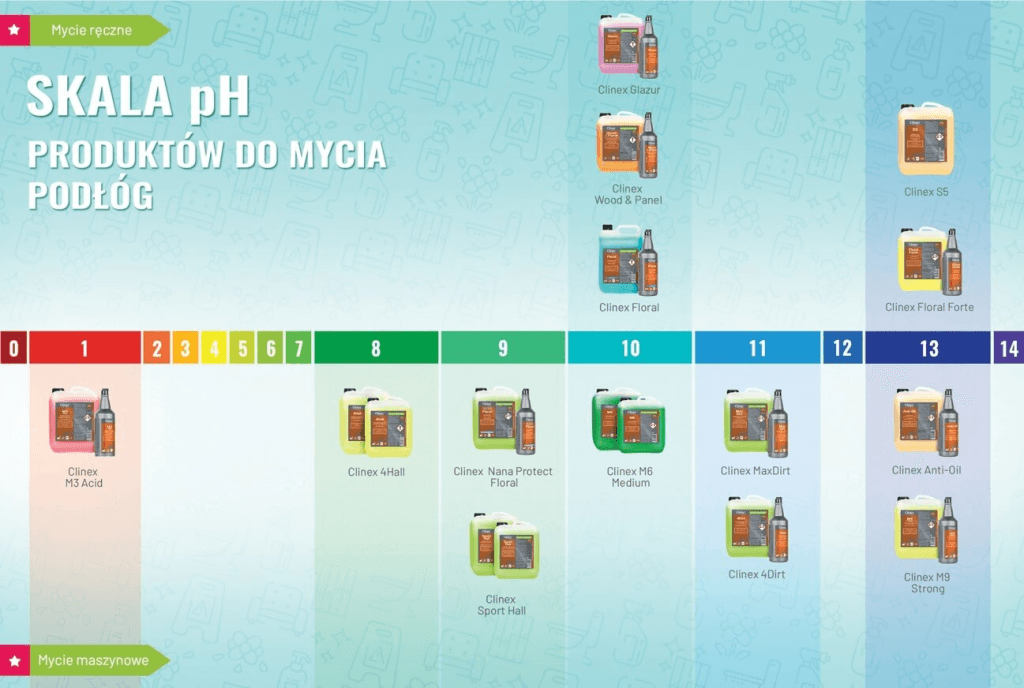
Stone floors

Stone floors are divided into: natural and artificial . Natural stones include: marble, granite, basalt, limestone and sandstone, travertine. Artificial stone floors: terrazzo, terracotta.
Therefore, the selection of appropriate methods and agents for cleaning and caring for various types of surfaces is crucial for the professional cleaning industry.
In the article below:
- Marble and its care
- Granite and its cleaning
- How to keep terrazzo clean?
Wooden floors and panels

Wooden floors, such as varnished and laminated, are very popular, so to maintain their beauty and durability, it is important to use appropriate cleaning and care products, as well as regular cleaning. Product dilutions should be used in accordance with the instructions on the packaging and the degree of surface contamination. Do not use too little or too much concentration as it may damage the floor. It is also important to pay attention to the pH of your floors, as some floors are more resistant to acidic or alkaline cleaning products. Laminate floors are resistant to pH in the range of 3.0 to 10.0, and varnished surfaces in the range of 4.0 to 10.0.
From the article below you will learn:
- How to care for wooden floors?
- What are the recommended products for the care of wooden floors?
- Products containing polymer
Care and cleaning of wooden floors
From the article below you will learn:
- What does professional panel maintenance look like?
- Washing varnished wood panels.
- How to wash laminated panels
Washing and caring for panels – how to properly maintain them
Resin floors

Epoxy and polyurethane resin floors, which used to be used mainly in garages, terraces, utility or industrial rooms, are now often also used in apartments and houses. This is a good solution for people who want to keep their home in a minimalist style. These floors are especially recommended for allergy sufferers. An additional advantage is that they can be designed with a 3D effect that will surely attract the attention of guests.
From the article you will learn:
- What are the different types of resin floors?
- Where resin floors are used
- How to care for resin floors
- Is manual or mechanical cleaning better for cleaning floors?
PVC floors

PVC (Polyvinyl chloride) is a plastic produced from the polymerization of the monomer vinyl chloride. For example, it is used, among others, to produce floor coverings that are resistant to various cleaning agents, regardless of pH. As a result, PVC tiles can be cleaned with both acidic and alkaline agents, thus removing various types of dirt.
The following article includes:
- Types of PVC carpets and their properties and purpose
- The role of polymer additives and silicon nanoparticles in cleaning preparations for PVC floors
Care and cleaning of PVC floors
Ceramic tiles

Floor tiles are one of the most popular materials used for interior finishing. They are very durable and offer a wide selection of styles, colors and finishes. Ceramic tiles are cladding elements fired in kilns at high temperatures. They are hard, durable and resistant to light, water, chemicals and high temperatures. We can divide them into two categories: glazed and unglazed. The difference between them is that glazed tiles are covered with a special coating that gives them texture and color.
In the article below:
- Types of ceramic tiles
- How to clean ceramic tiles
Care and cleaning of ceramic tiles
Summary
In today’s world, maintaining cleanliness is extremely important, both at home and in public places. The cleaning industry plays a key role in maintaining order and hygiene, and proper cleaning and care of floors is crucial. Therefore, to keep them in good condition, it is important to use appropriate techniques and products depending on the type of surface. In the articles, we discussed different types of floor surfaces, as well as various methods and tools that are necessary for proper cleaning and care. We also presented the types of cleaning products and how to use them to obtain the best results. Likewise, we have also provided some care tips to keep your surfaces clean and in good condition for a long time. Finally, we share a practical graphic showing the recommended use of the products depending on the type of floor.




